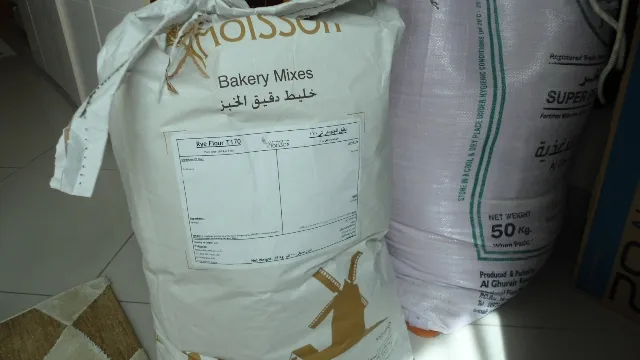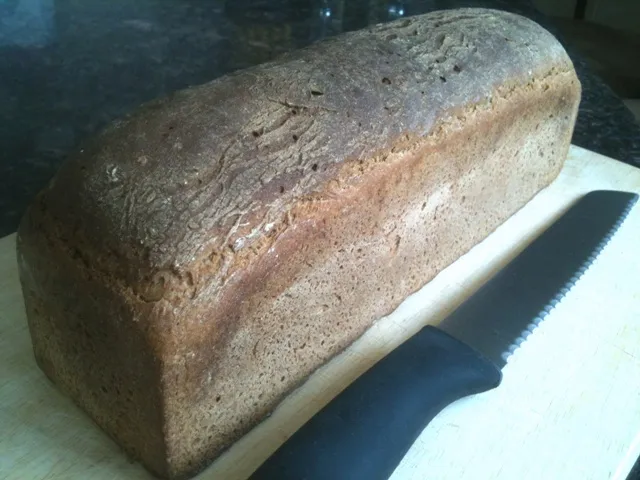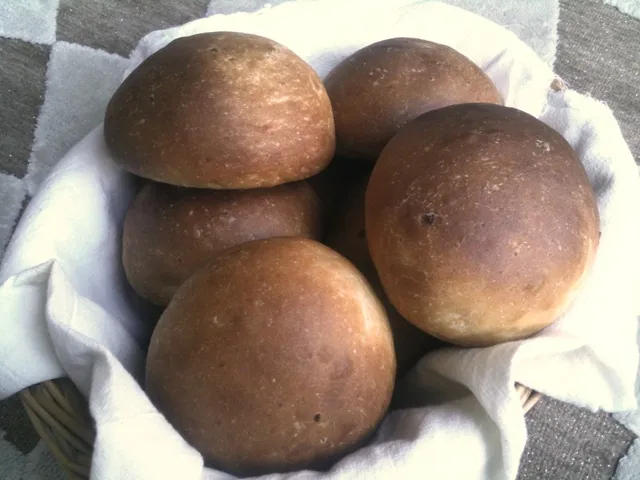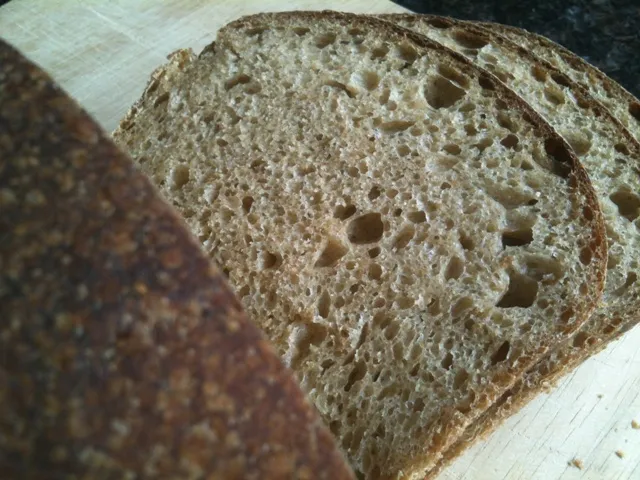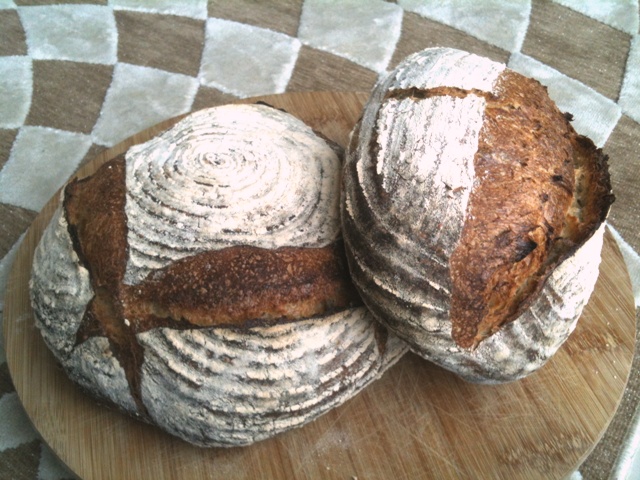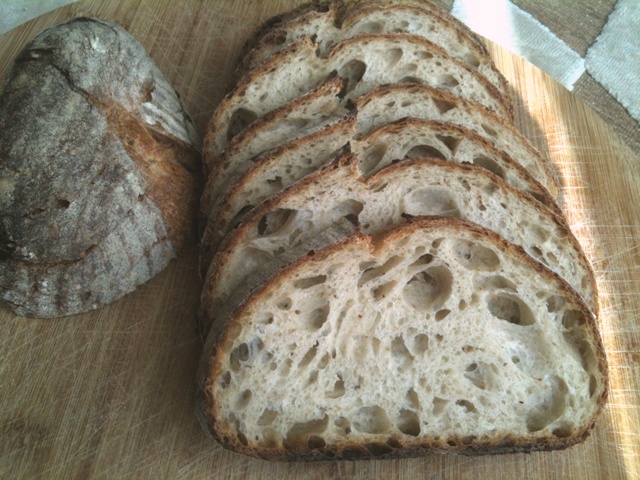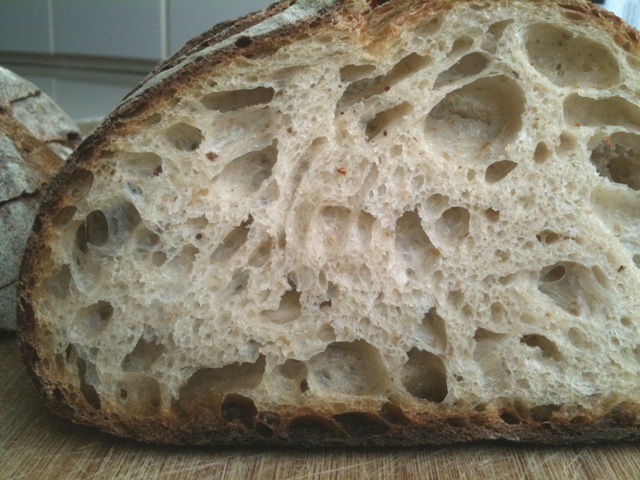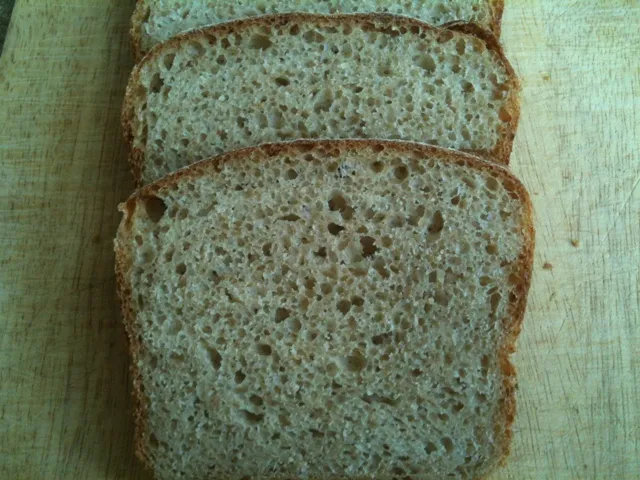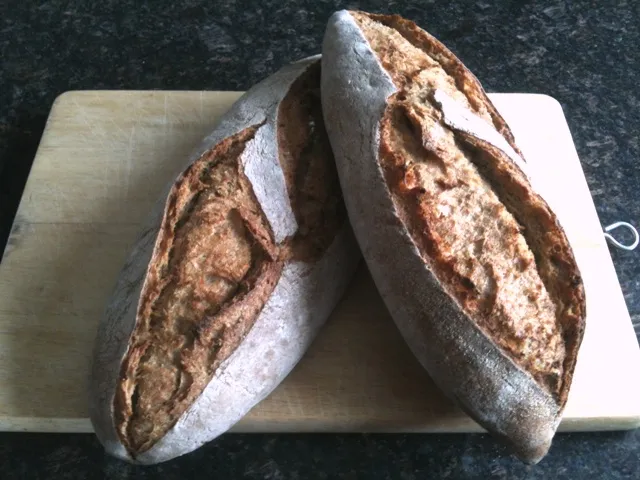Peter Rienhart's 45% Rye Meteil
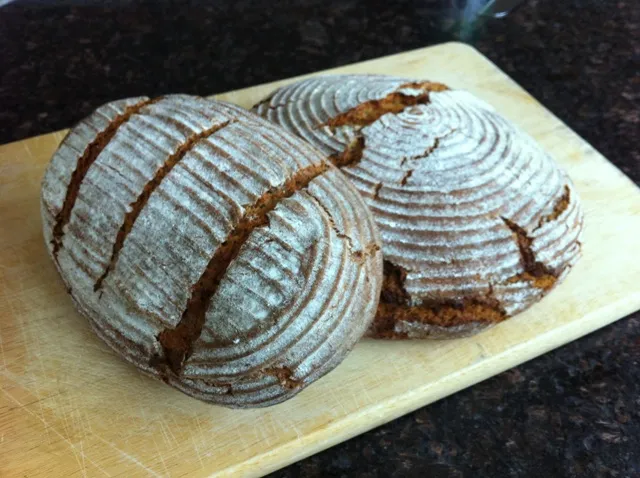
I wanted to bake a Rye bread from Peter Reinhart's book : Whole grain books, as a change from Hamelman's Rye recipes.
With 45 % Rye flour, and 55% whole wheat flour, the bread is very wholesome, and enriched. It contains butter, honey, caraway, and nigella seeds. The bread is leavened with the 45% Rye flour amount as Rye sour, but the final dough contains 2.25 tsp of instant yeast. The bulk fermentation and final fermentation takes from 50-60 minutes at most.
